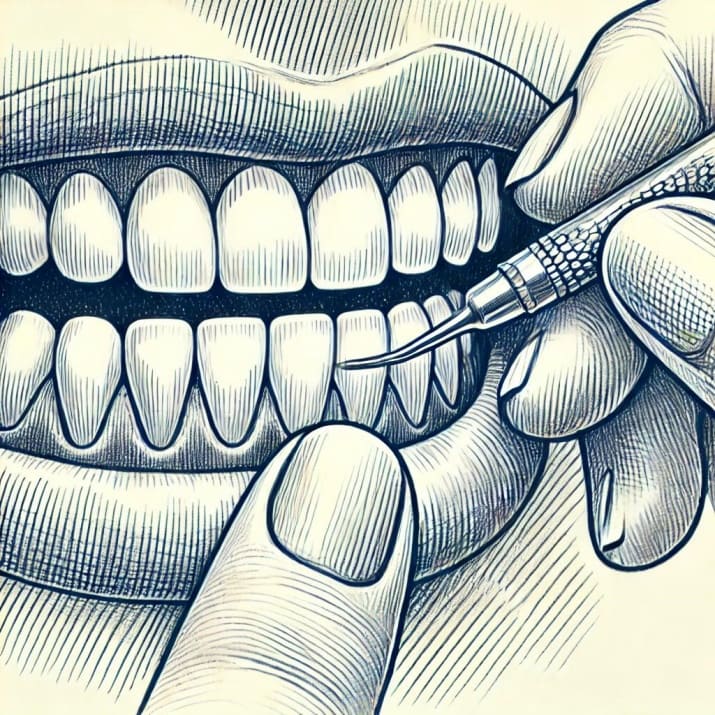12+ Ways To Prevent Craze Lines On Teeth Naturally

The pursuit of a flawless smile is a universal quest, and one of the most common obstacles to achieving this goal is the development of craze lines on teeth. These fine lines or cracks can appear on the surface of the teeth due to various factors, including aging, teeth grinding, or even the consumption of certain foods and beverages. While they are generally not a cause for concern from a dental health perspective, they can significantly affect the aesthetic appeal of one’s smile. Fortunately, there are numerous natural methods and practices that can help prevent or reduce the appearance of craze lines, ensuring your smile remains vibrant and healthy.
Understanding Craze Lines
Before diving into the preventive measures, it’s essential to understand what craze lines are and why they occur. Craze lines are tiny cracks in the enamel of the teeth, which can be caused by a variety of factors including temperature changes, chewing or biting hard objects, and the natural wear and tear that comes with aging. While they are predominantly a cosmetic issue, in some cases, they can potentially lead to more significant dental problems if they deepen and expose the dentin or pulp of the tooth.
Natural Prevention Methods
Preventing craze lines involves a combination of good oral hygiene practices, dietary adjustments, and lifestyle changes. Here are 12+ ways to naturally prevent or reduce the appearance of craze lines on your teeth:
Practice Good Oral Hygiene: Maintaining good oral hygiene is the first line of defense against dental issues, including craze lines. Brushing your teeth at least twice a day with a fluoride toothpaste and flossing once a day can help remove plaque and bacteria that can weaken tooth enamel.
Use a Soft-Bristled Toothbrush: Brushing your teeth with a soft-bristled toothbrush can reduce the risk of damaging the enamel. Hard-bristled toothbrushes can scrub away the enamel, making teeth more susceptible to craze lines.
Avoid Teeth Grinding: Teeth grinding (bruxism) is a common cause of craze lines. Practicing relaxation techniques, such as meditation or yoga, and using a mouthguard at night can help alleviate this habit.
Limit Acidic Foods and Drinks: Consuming foods and drinks high in acid, such as citrus fruits, tomatoes, and soda, can erode tooth enamel, leading to craze lines. It’s not necessary to completely eliminate these items from your diet, but limiting their consumption and rinsing your mouth with water after eating or drinking them can help.
Stay Hydrated: Drinking plenty of water helps keep your mouth moist and washed clean of bacteria and food particles. This can reduce the risk of enamel erosion and, consequently, craze lines.
Use a Desensitizing Toothpaste: If you already have craze lines, using a desensitizing toothpaste can help alleviate sensitivity, which is sometimes associated with these lines.
Avoid Chewing on Hard Objects: Chewing on ice, hard candy, or other hard objects can cause stress on your teeth, leading to the formation of craze lines. Breaking this habit can significantly reduce the risk of developing these lines.
Eat Calcium and Vitamin D Rich Foods: Calcium and vitamin D are crucial for maintaining strong teeth and bones. Incorporating dairy products, leafy greens, and fortified foods into your diet can help strengthen your teeth and reduce the risk of craze lines.
AvoidClazzified Sugars: Consuming foods high in refined sugars can lead to tooth decay and weaken the enamel, making teeth more prone to craze lines.
Consider Oil Pulling: Oil pulling, an ancient Ayurvedic practice, involves swishing oil (like coconut or sesame oil) around in your mouth to remove bacteria and reduce inflammation. Some proponents of this practice believe it can help strengthen teeth and gums.
Use a Fluoride Mouthwash: In addition to brushing with fluoride toothpaste, using a fluoride mouthwash can provide extra protection for your tooth enamel, helping to prevent erosion and craze lines.
Visit Your Dentist Regularly: Regular dental check-ups are crucial for maintaining good oral health. Your dentist can identify early signs of craze lines and provide professional advice or treatments to prevent them from worsening.
Reduce Stress: High levels of stress can lead to teeth grinding and clenching, which, as mentioned, can cause craze lines. Practicing stress-reducing activities, such as deep breathing exercises, can help mitigate this risk.
Lifestyle Adjustments
Making a few lifestyle adjustments can also play a significant role in preventing craze lines. For example, quitting smoking can reduce the risk of tooth decay and gum disease, both of which can weaken teeth and make them more susceptible to craze lines. Additionally, avoiding repetitive motions that involve biting or chewing non-food items, such as pens or fingernails, can also help.
Conclusion
Preventing craze lines on teeth naturally involves a multifaceted approach that includes maintaining good oral hygiene, making dietary adjustments, and adopting certain lifestyle changes. By understanding the causes of craze lines and implementing the strategies outlined above, individuals can significantly reduce their risk of developing these lines, ensuring their smile remains healthy, vibrant, and flawless for years to come.
What are craze lines, and are they harmful to my oral health?
+Craze lines are tiny cracks in the enamel of the teeth, typically caused by aging, grinding, or certain dietary habits. While they are generally not harmful and do not require treatment, deepening cracks can potentially expose the dentin or pulp, leading to sensitivity and other complications.
Can craze lines be prevented completely?
+While it may not be possible to prevent craze lines entirely, especially those caused by aging, practicing good oral hygiene, avoiding harmful habits like teeth grinding, and making dietary adjustments can significantly reduce the risk of developing them.
Are there any professional treatments for craze lines?
+For individuals concerned about the appearance of craze lines, professional treatments such as dental bonding, veneers, or cosmetic contouring can help improve the aesthetic appeal of the teeth. However, these treatments should be discussed with a dentist to determine the best course of action based on the individual's oral health and specific needs.
By embracing these natural preventive measures and maintaining a proactive approach to oral health, individuals can enjoy a healthier, more radiant smile, free from the cosmetic concerns associated with craze lines. Remember, the key to a beautiful smile is not just about aesthetics; it’s also about ensuring the overall health and well-being of your teeth and gums.
